- Home
- Mary Roach
Stiff Page 4
Stiff Read online
Page 4
This sort of reasoned, pained sensitivity was rare in the hey-day of British anatomy schools. The far more common tactic was to sneak into a graveyard and dig up someone else’s relative to study. The act became known as body snatching. It was a new crime, distinct from grave-robbing, which involved the pilfering of jewels and heirlooms buried in tombs and crypts of the well-to-do. Being caught in possession of a corpse’s cufflinks was a crime, but being caught with the corpse itself carried no penalty. Before anatomy schools caught on, there were no laws on the books regarding the misappropriation of freshly dead humans. And why would there be? Up until that point, there had been little reason, short of necrophilia,* to undertake such a thing.
Some anatomy instructors mined the timeless affinity of university students for late-night pranks by encouraging their enrollees to raid graveyards and provide bodies for the class. At certain Scottish schools, in the 1700s, the arrangement was more formal: Tuition, writes Ruth Richardson, could be paid in corpses rather than cash.
Other instructors took the dismal deed upon themselves. These were not low-life quacks. They were respectable members of their profession. Colonial physician Thomas Sewell, who went on to become the personal physician to three U.S. presidents and to found what is now George Washington University Medical School, was convicted in 1818 of digging up the corpse of a young Ipswich, Massachusetts, woman for the purposes of dissection.
And then there were the anatomists who paid someone else to go digging. By 1828, the demands of London’s anatomy schools were such that ten full-time body snatchers and two hundred or so part-timers were kept busy throughout the dissecting “season.” (Anatomy courses were held only between October and May, to avoid the stench and swiftness of summertime decomposition.) According to a House of Commons testimony from that year, one gang of six or seven resurrectionists, as they were often called, dug up 312 bodies. The pay worked out to about $1,000 a year—some five to ten times the earnings of the average unskilled laborer—with summers off.
The job was immoral, and ugly to be sure, but probably less unpleasant than it sounds. The anatomists wanted freshly dead bodies, so the smell wasn’t really a problem. A body snatcher didn’t have to dig up the entire grave, but rather just the top end of it. A crowbar would then be slipped under the coffin lid and wrenched upward, snapping off the top foot or so. The corpse was fished out with a rope around the neck or under the arms, and the dirt, which had been piled on a tarp, would be slid back in. The whole affair took less than an hour.
Many of the resurrectionists had held posts as gravediggers or assistants in anatomy labs, where they’d come into contact with the gangs and their doings. Drawn to the promise of higher pay and less confining hours, they abandoned legitimate posts to take up the shovel and sack. A few diary entries—transcribed from the anonymously written Diary of a Resurrectionist—yield some insight into the sort of people we’re talking about here:
Tuesday 3rd (November 1811). Went to look out and brought the Shovils from Bartholow,…Butler and me came home intoxsicated.
Tuesday 10th. Intoxsicated all day: at night went out & got 5 Bunhill Row. Jack all most buried.
Friday 27th…. Went to Harps, got 1 large and took it to Jack’s house, Jack, Bill, and Tom not with us, Geting drunk.
It is tempting to believe that the author’s impersonal references to the corpses belie some sense of discomfort with his activities. He does not dwell upon their looks or muse about their sorry fate. He cannot bring himself to refer to the dead as anything other than a size or a gender. Only occasionally do the bodies merit a noun. (Most often “thing,” as in “Thing bad,” meaning “body decomposed.”) But more likely it was simply the man’s disinclination to sit down and write that accounts for the shorthand. Later entries show he couldn’t even be bothered so spell out “canines,” which appears as “Cns.” (When a “thing bad,” the “Cns” and other teeth were pulled and sold to dentists, for making dentures,* so as to keep the undertaking from being a complete loss.)
Body snatchers were common thugs; their motive, simple greed. But what of the anatomists? Who were these upstanding members of society who could commission the theft and semipublic mutilation of someone’s dead grandmother? The best-known of the London surgeon-anatomists was Sir Astley Cooper. In public, Cooper denounced the resurrectionists, yet he not only sought out and retained their services, but encouraged those in his employ to take up the job. Thing bad.
Cooper was an outspoken defender of human dissection. “He must mangle the living if he has not operated on the dead” was his famous line. While his point is well taken and the medical schools’ plight was a difficult one, a little conscience would have served. Cooper was the type of man who not only evinced no compunction about cutting up strangers’ family members but happily sliced into his own former patients. He kept in touch with the family doctors of those he had operated on and, upon hearing of their passing, commissioned his resurrectionists to unearth them so that he might have a look at how his handiwork had held up. He paid for the retrieval of bodies of colleagues’ patients known to have interesting ailments or anatomical peculiarities. He was a man in whom a healthy passion for biology seemed to have metastasized into a sort of macabre eccentricity. In Things for the Surgeon, an account of body snatching by Hubert Cole, Sir Astley is said to have painted the names of colleagues onto pieces of bone and forced lab dogs to swallow them, so that when the bone was extracted during the dog’s dissection, the colleague’s name would appear in intaglio, the bone around the letters having been eaten away by the dog’s gastric acids. The items were handed out as humorous gifts. Cole doesn’t mention the colleagues’ reactions to the one-of-a-kind nameplates, but I would hazard a guess that the men made an effort to enjoy the joke and displayed the items prominently, at least when Sir Astley came calling. For Sir Astley wasn’t the sort of fellow whose ill will you wanted to take with you to your grave. As Sir Astley himself put it, “I can get anyone.”
Like the resurrectionists, the anatomists were men who had clearly been successful in objectifying, in their own minds at least, the dead human body. Not only did they view dissection and the study of anatomy as justification for unapproved disinterment, they saw no reason to treat the unearthed dead as entities worthy of respect. It didn’t bother them that the corpses would arrive at their doors, to quote Ruth Richardson, “compressed into boxes, packed in sawdust,…trussed up in sacks, roped up like hams…” So similar in their treatment were the dead to ordinary items of commerce that every now and then boxes would be mixed up in transit. James Moores Ball, author of The Sack-’Em-Up Men, tells the tale of the flummoxed anatomist who opened a crate delivered to his lab expecting a cadaver but found instead “a very fine ham, a large cheese, a basket of eggs, and a huge ball of yarn.” One can only imagine the surprise and very special disappointment of the party expecting very fine ham, cheese, eggs, or a huge ball of yarn, who found instead a well-packed but quite dead Englishman.
It wasn’t so much the actual dissecting that smacked of disrespect. It was the whole street-theater-cum-abattoir air of the proceedings. Engravings by Thomas Rowlandson and William Hogarth of eighteenth-and early-nineteenth-century dissecting rooms show cadavers’ intestines hanging like parade streamers off the sides of tables, skulls bobbing in boiling pots, organs strewn on the floor being eaten by dogs. In the background, crowds of men gawk and leer. While the artists were clearly editorializing upon the practice of dissection, written sources suggest the artworks were not far removed from the truth. Here is the composer Hector Berlioz, in an 1822 entry in his Memoirs, shedding considerable light on his decision to pursue music rather than medicine:
Robert…took me for the first time to the dissecting room…. At the sight of that terrible charnel-house—fragments of limbs, the grinning heads and gaping skulls, the bloody quagmire underfoot and the atrocious smell it gave off, the swarms of sparrows wrangling over scraps of lung, the rats in their corner gnawing the bleeding verte
brae—such a feeling of revulsion possessed me that I leapt through the window of the dissecting room and fled for home as though Death and all his hideous train were at my heels.
And I would wager a fine ham and a huge ball of yarn that no anatomist of that era ever held a memorial service for the leftover pieces. Cadaver remainders were buried not out of respect but for lack of other options. The burials were hastily done, always at night and usually out behind the building.
To avoid the problematic odors that tend to accompany a shallow burial, anatomists came up with some creative solutions to the flesh disposal problem. A persistent rumor had them in cahoots with the keepers of London’s wild animal menageries. Others were said to keep vultures on hand for the task, though if Berlioz is to be believed, the sparrows of the day were well up to the task. Richardson came across a reference to anatomists cooking down human bones and fat into “a substance like Spermaceti,” which they used to make candles and soap. Whether these were used in the anatomists’ homes or given away as gifts was not noted, but between these and the gastric-juice-etched nameplates, it’s safe to say you really didn’t want your name on an anatomist’s Christmas gift list.
And so it went. For nearly a century, the shortage of legally dissectable bodies pitted the anatomist against the private citizen. By and large, it was the poor who had most to lose. For over time, entrepreneurs came up with an arsenal of antiresurrectionist products and services, affordable only by the upper class. Iron cages called mortsafes could be set in concrete above the grave or underground, around the coffin. Churches in Scotland built graveyard “dead houses,” locked buildings where a body could be left to decompose until its structures and organs had disintegrated to the point where they were of no use to anatomists. You could buy patented spring-closure coffins, coffins outfitted with cast-iron corpse straps, double and even triple coffins. Appropriately, the anatomists were among the undertakers’ best customers. Richardson relates that Sir Astley Cooper not only went for the triple coffin option but had the whole absurd Chinese-box affair housed in a hulking stone sarcophagus.
It was an Edinburgh anatomist named Robert Knox who instigated anatomy’s fatal PR blunder: the implicit sanctioning of murder for medicine. In 1828, one of Knox’s assistants answered the door to find a pair of strangers in the courtyard with a cadaver at their feet. This was business as usual for anatomists of the day, and so Knox invited the men in. Perhaps he made them a cup of tea, who knows. Knox was, like Astley, a man of high social bearing. Although the men, William Burke and William Hare, were strangers, he cheerfully bought the body and accepted their story that the cadaver’s relatives had made the body available for sale—though this was, given the public’s abhorrence of dissection, an unlikely scenario.
The body, it turns out, had been a lodger at a boardinghouse run by Hare and his wife, in an Edinburgh slum called Tanner’s Close. The man died in one of Hare’s beds, and, being dead, was unable to come up with the money he owed for the nights he’d stayed. Hare wasn’t one to forgive a debt, so he came up with what he thought to be a fair solution: He and Burke would haul the body to one of those anatomists they’d heard about over at Surgeons’ Square. There they would sell it, kindly giving the lodger the opportunity, in death, to pay off what he’d neglected to in life.
When Burke and Hare found out how much money could be made selling corpses, they set about creating some of their own. Several weeks later, a down-and-out alcoholic took ill with fever while staying at Hare’s flophouse. Figuring the man to be well on his way to cadaverdom anyway, the men decided to speed things along. Hare pressed a pillow to the man’s face while Burke laid his considerable body weight on top of him. Knox asked no questions and encouraged the men to come back soon. And they did, some fifteen times. The pair were either too ignorant to realize that the same money could be made digging up graves of the already dead or too lazy to undertake it.
A series of modern-day Burke-and-Hare-type killings took place barely ten years ago, in Barranquilla, Colombia. The case centered on a garbage scavenger named Oscar Rafael Hernandez, who in March 1992 survived an attempt to murder him and sell his corpse to the local medical school as an anatomy lab specimen.* Like most of Colombia, Barranquilla lacked an organized recycling program, and hundreds of the city’s destitute forge a living picking through garbage dumps for recyclables to sell. So scorned are these people that they—along with other social outcasts such as prostitutes and street urchins—are referred to as “disposables” and have often been murdered by right-wing “social cleansing” squads. As the story goes, guards from Universidad Libre had asked Hernandez if he wanted to come to the campus to collect some garbage, and then bludgeoned him over the head when he arrived. A Los Angeles Times account of the case has Hernandez awakening in a vat of formaldehyde alongside thirty corpses, a colorful if questionable detail omitted from other descriptions of the case. Either way, Hernandez came to and escaped to tell his tale.
Activist Juan Pablo Ordoñez investigated the case and claims that Hernandez was one of at least fourteen Barranquilla indigents murdered for medicine—even though an organized willed body program existed. According to Ordoñez’s report, the national police had been unloading bodies gleaned from their own, in-house “social cleansing” activities and collecting $150 per corpse from the university coffers. The school’s security staff got wind of the setup and decided to get in on the action. At the time the investigation began, some fifty preserved bodies and body parts of questionable origin were found in the anatomy amphitheater. To date, no one from the university or the police has been arrested.
For his part, William Burke was eventually brought to justice. A crowd of more than 25,000 watched him hang. Hare was granted immunity, much to the disgust of the gallows crowd, who chanted “Burke Hare!”—meaning “Smother Hare,” “burke” having made its way into the popular vernacular as a synonym for “smother.” Hare probably did as much smothering as Burke, but “She’s been hared!” lacks the pleasing Machiavellian fricatives of “She’s been burked!” and the technicality is easily forgiven.
In a lovely sliver of poetic justice, Burke’s corpse was, in keeping with the law of the day, dissected. As the lecture had been about the human brain, it seems unlikely that the body cavity would have been opened and notably rearranged, but perhaps this was thrown in after the fact, as a crowd pleaser. The following day the lab was opened to the public, and some thirty thousand vindicated gawkers filed past. The post-dissection cadaver was, by order of the judge, shipped to the Royal College of Surgeons of Edinburgh to have its bones made into a skeleton, which resides there to this day, along with one of several wallets made from Burke’s skin.*
Though Knox was never charged for his role in the murders, public sentiment held him accountable. The freshness of the bodies, the fact that one had its head and feet cut off and others had blood oozing from the nose or ears—all of this should have raised the bristly Knox eyebrows. The anatomist clearly didn’t care. Knox further sullied his reputation by preserving one of Burke and Hare’s more comely corpses, the prostitute Mary Paterson, in a clear glass vat of alcohol in his lab.
When an inquiry by a lay committee into Knox’s role generated no formal action against the doctor, a mob gathered the following day with an effigy of Knox. (The thing must not have looked a great deal like the man, for they felt the need to label it: “Knox, the associate of the infamous Hare,” explained a large sign on its back.) The stuffed Knox was paraded through the streets to the house of the real Knox, where it was hung by its neck from a tree and then cut down and—fittingly—torn to pieces.
It was around this time that Parliament conceded that the anatomy problem had gotten a tad out of hand and convened a committee to brainstorm solutions. While the debate mainly focused on alternate sources of bodies—most notably, unclaimed corpses from hospitals, prisons, and workhouses—some physicians raised an interesting item of debate: Is human dissection really necessary? Can’t anatomy be learned
from models, drawings, preserved prosections?
There have been times and places, in history, when the answer to the question “Is human dissection necessary?” was unequivocally yes. Here are some examples of what can happen when you try to figure out how a human body works without actually opening one up. In ancient China, Confucian doctrine considered dissection a defilement of the human body and forbade its practice. This posed a problem for the Father of Chinese Medicine, Huang Ti, who, around 2600 B.C., set out to write an authoritative medical and anatomical text (Nei Ch’ing, or Canon of Medicine). As is evident from this passage—quoted in Early History of Human Anatomy—there are places where Huang is, through no fault of his own, rather clearly winging it:
The heart is a king, who rules over all organs of the body; the lungs are his executive, who carry out his orders; the liver is his commandant, who keeps up the discipline; the gall bladder, his attorney general…and the spleen, his steward who supervises the five tastes. There are three burning spaces—the thorax, the abdomen and the pelvis—which are together responsible for the sewage system of the body.
To Huang Ti’s credit, though, he managed, without ever disassembling a corpse, to figure out that “the blood of the body is under the control of the heart” and that “the blood current flows in a continuous circle and never stops.” In other words, the man figured out what William Harvey figured out, four thousand years before Harvey and without laying open any family members.

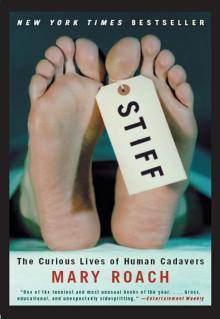 Stiff
Stiff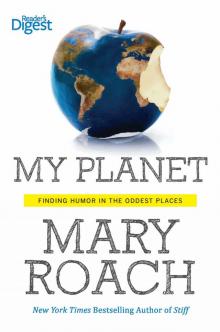 My Planet: Finding Humor in the Oddest Places
My Planet: Finding Humor in the Oddest Places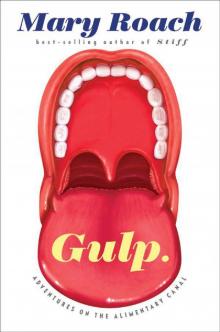 Gulp: Adventures on the Alimentary Canal
Gulp: Adventures on the Alimentary Canal The Best American Science and Nature Writing 2011
The Best American Science and Nature Writing 2011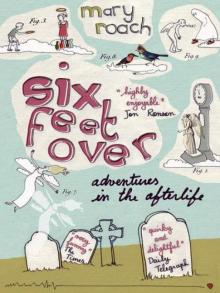 Six Feet Over: Adventures in the Afterlife
Six Feet Over: Adventures in the Afterlife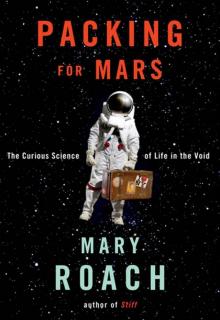 Packing for Mars: The Curious Science of Life in the Void
Packing for Mars: The Curious Science of Life in the Void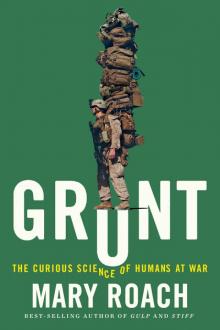 Grunt: The Curious Science of Humans at War
Grunt: The Curious Science of Humans at War